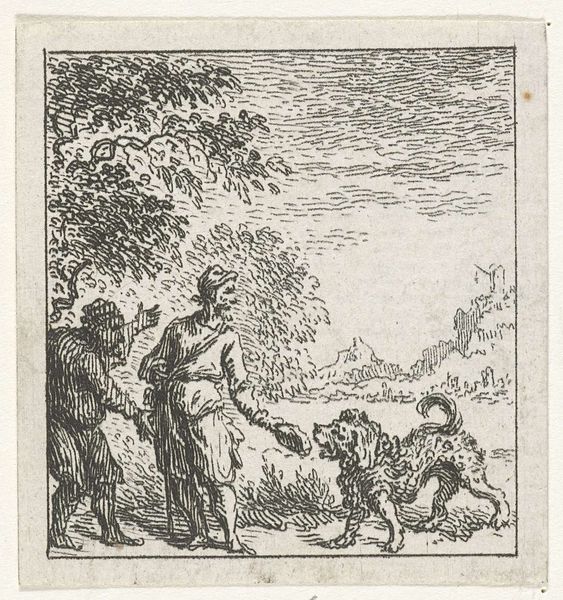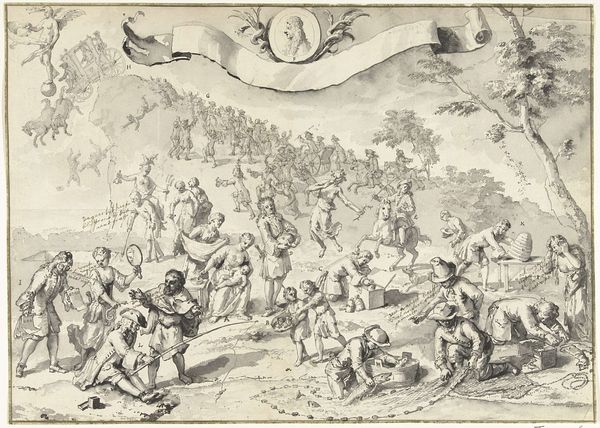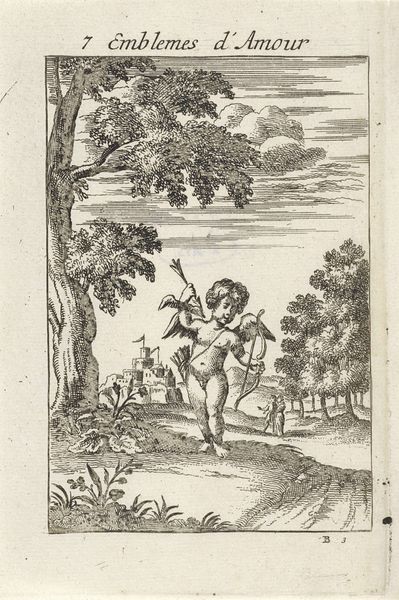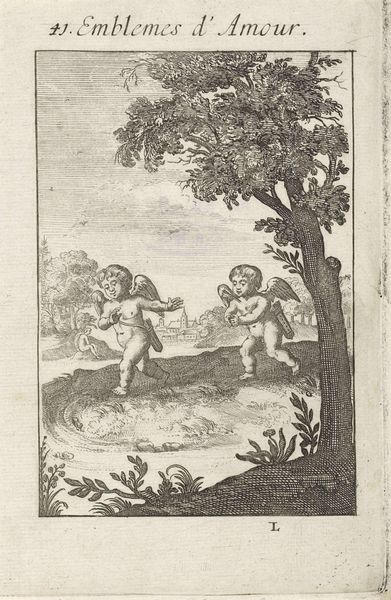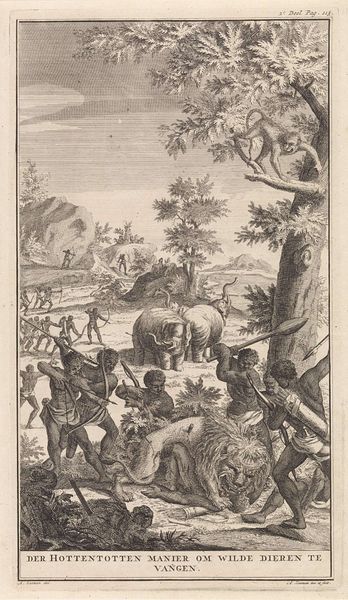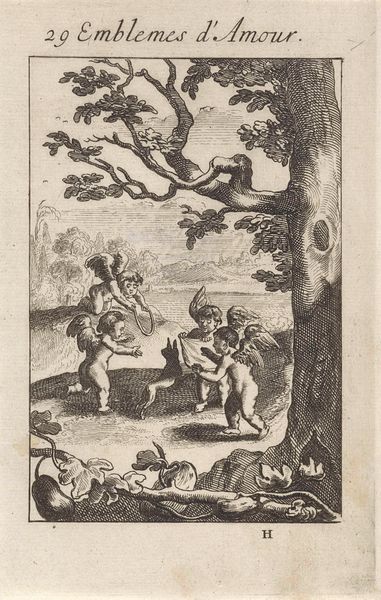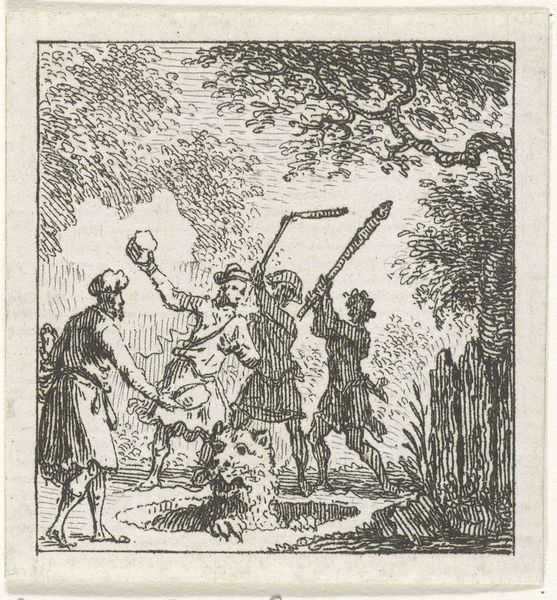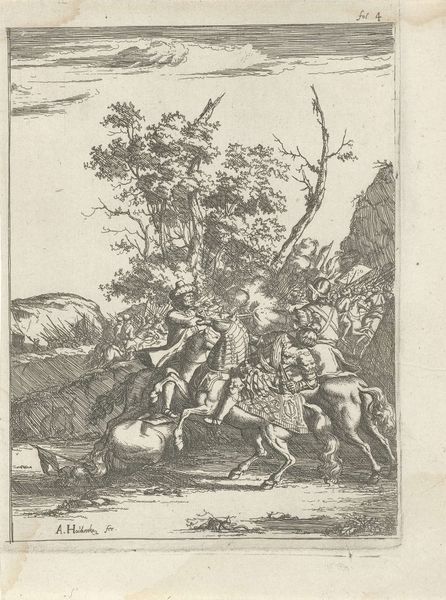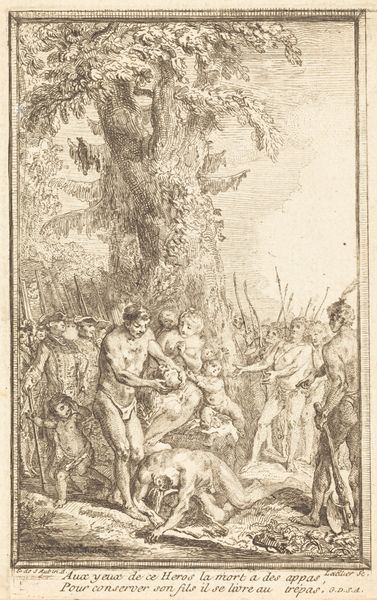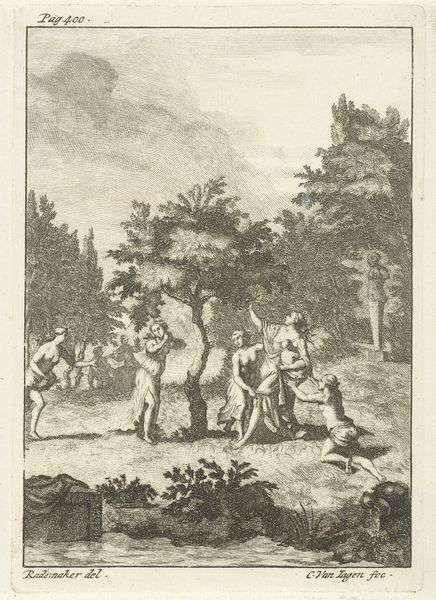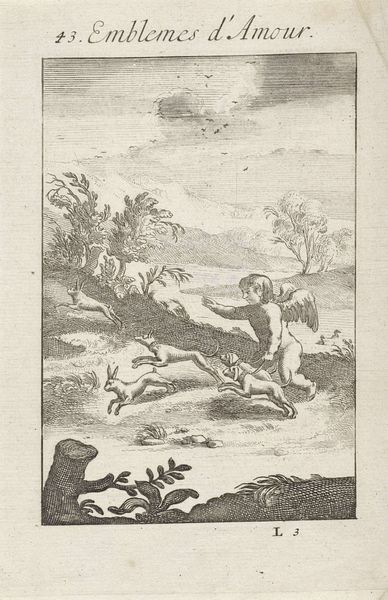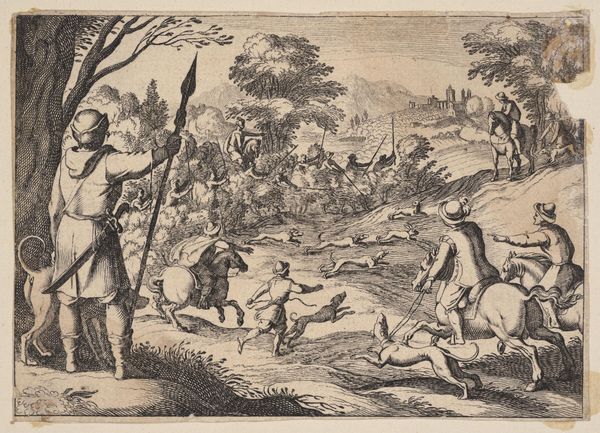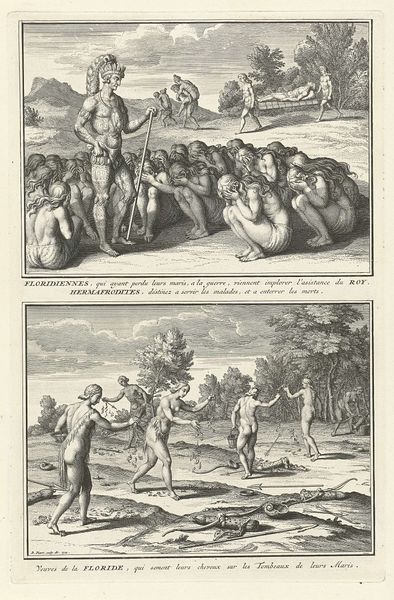
engraving
#
baroque
#
old engraving style
#
landscape
#
figuration
#
genre-painting
#
engraving
Dimensions: height 145 mm, width 95 mm
Copyright: Rijks Museum: Open Domain
Curator: Welcome. Before us is an engraving from 1686 titled "Stoeiende putti in een landschap," which translates to "Fighting Putti in a Landscape". Jan van Vianen is credited as the artist, and it's now part of the Rijksmuseum's collection. Editor: My immediate impression is… pure, almost frantic joy. It feels incredibly active. These little cherubs are positively tumbling over each other! Curator: Indeed. This engraving captures a seemingly innocent scene, but within the context of late 17th-century Dutch art, there is likely an intent beyond simple playfulness. These images circulated as illustrations to books of emblems popular in the Baroque. They were not so different from our cartoons but intended for an educated audience to unpack in terms of a social lesson. Editor: The emblems certainly provide more context, it shifts the meaning beyond playful children in a grove. I am immediately drawn to their bodies and poses. There’s something potent about that squirming little tangle in the foreground...they are all muscle and roundness. The visual symbolism has its roots, of course, in classical iconography—Cupid’s entourage—but these figures are domesticated; this is more "cherubic mischief" than divine force, at least, superficially. Curator: Precisely. What strikes me, beyond the figures, is how these images participate in the burgeoning market for prints. It seems this imagery served a variety of publications beyond the finely-printed books that often occupy our attention. The fact that it is an engraving, allows for easy reproduction and widespread dissemination. So images like these reach a broad audience. The content serves to domesticate "love," but this work reveals an emerging visual culture industry, if you will. Editor: I agree that "domestication" is key here. This isn't about a powerful, transformative force. It's a charming scene, full of familiar and safe allegories. I would suggest the artists drew heavily on the visual language popularized by emblem books precisely to communicate in familiar codes that resonated with buyers. A controlled environment. Curator: And while the artist’s technique contributes, let's not underestimate the effect that socio-economic forces also had on producing the artwork, its aesthetic, and reception! Editor: A crucial point. The forces of the art market always impact art, as a language and industry! Seeing this has certainly added layers to a deceptively straightforward and visually accessible artwork. Curator: Yes, I agree entirely.
Comments
No comments
Be the first to comment and join the conversation on the ultimate creative platform.
